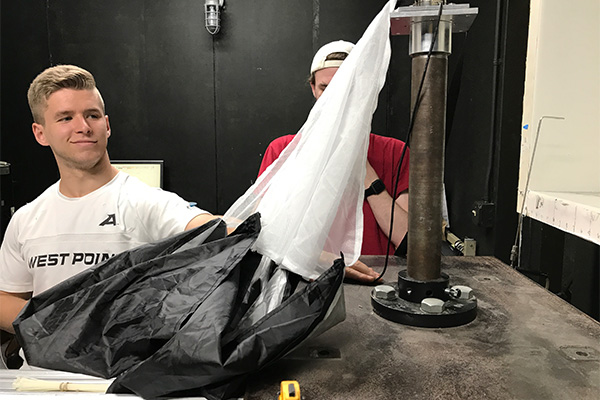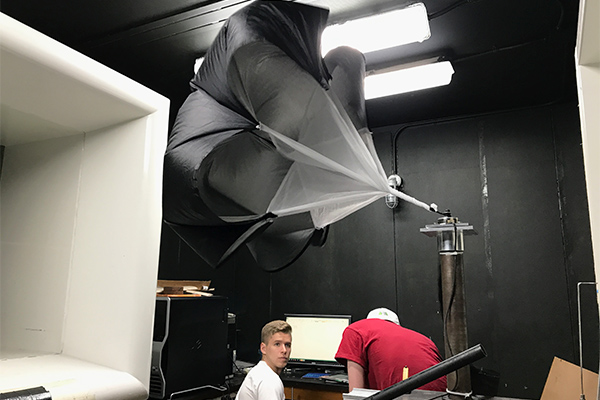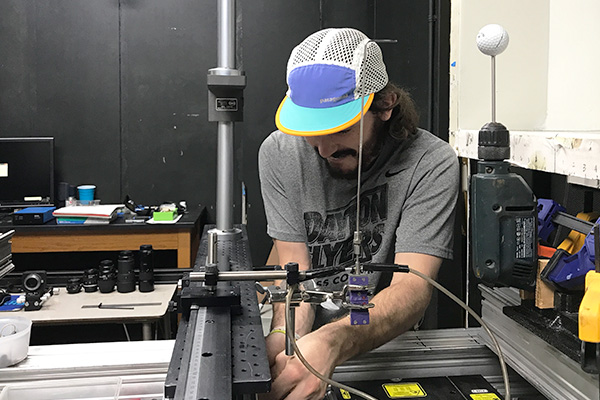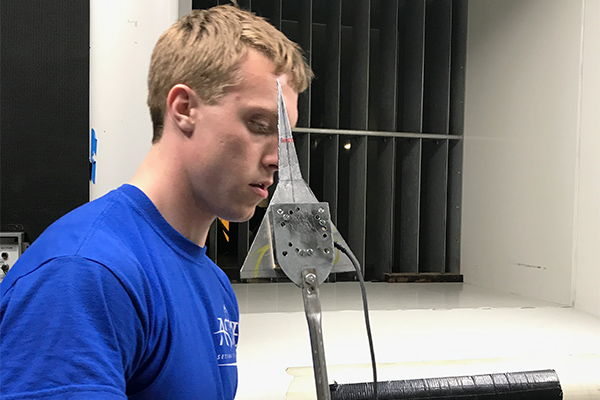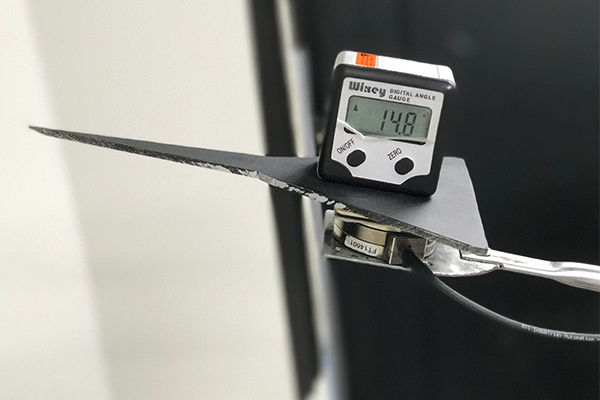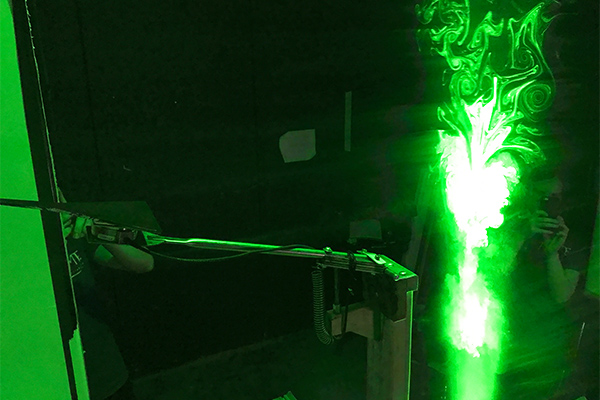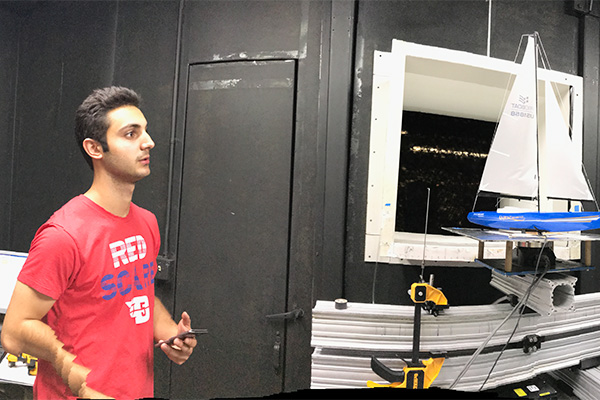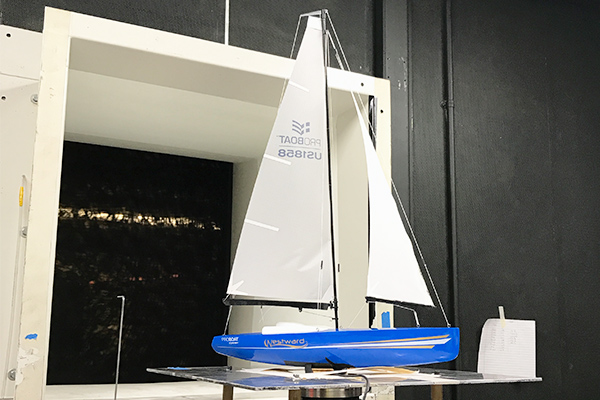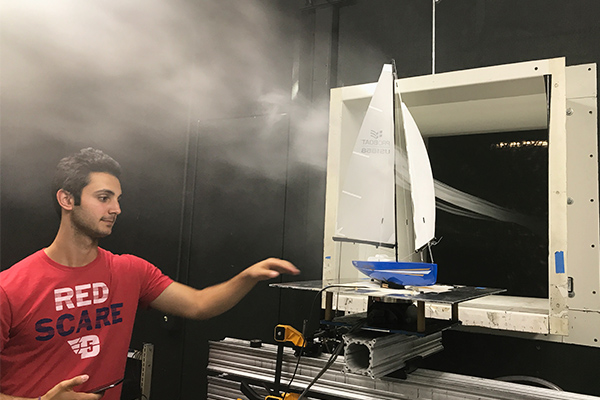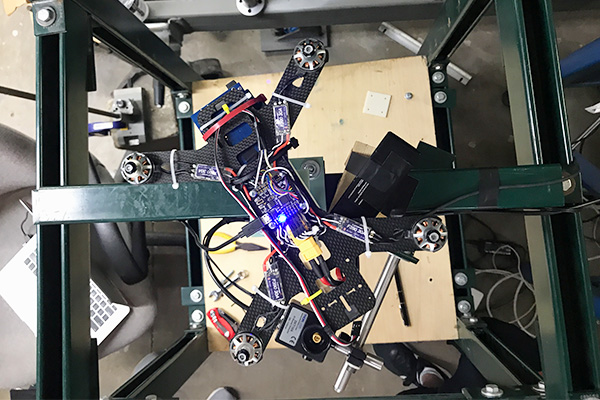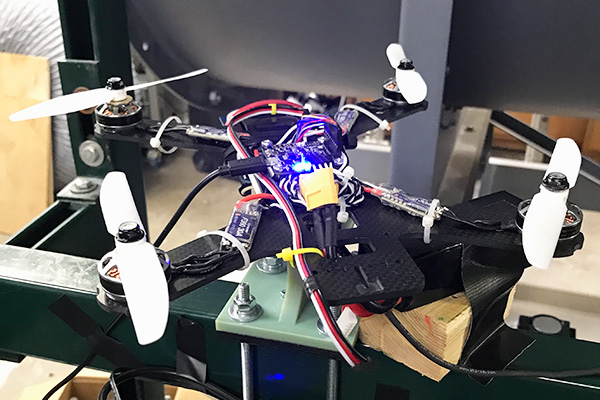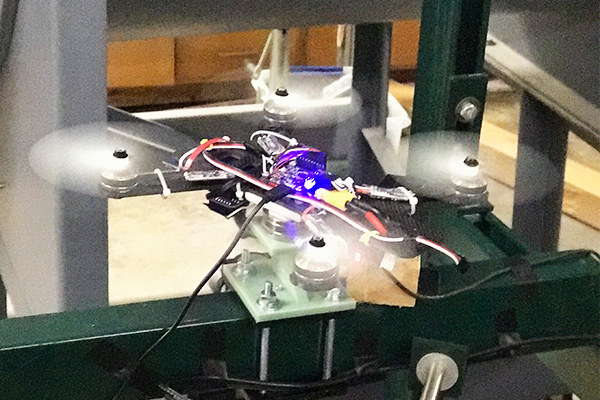Dayton Engineer

New classroom approach brings passion to the forefront of learning
By Kelly Garrow, School of Engineering
Having received his undergraduate, graduate and doctoral degrees in the subject, Sid describes the underlying equations as “beautiful” and could have continued teaching his fundamental aerodynamics class (MEE 401) as he had been taught — through the study of theory and mathematical equations.
However, he wanted to allow his students to become as passionate about aerodynamics as he is and have a learning experience that they would remember long after the class ended.
During the last year of his doctoral studies at the University of Dayton and his first semester as a mechanical engineering faculty member, Sid revamped the aerodynamics course with multi-media PowerPoints, portfolios, active note taking packets and two self-directed “passion projects” that require students to take a deep dive into the subject matter.
“It’s easy to forget about the application of an equation and that it models something in real life,” Sid said. “I want my students to make those connections themselves.”
Students were asked to pick one of the suggested project areas, or create their own project, and go through the scientific process of research to understand the aerodynamics involved and discover what variables they might change to alter or improve performance. The ambiguity of the assignment was challenging for many of the students, who are used to the problem being defined for them.
“In the real world, engineers need to put together projects with the resources available and that’s what the students did with the passion projects,” Sid said. “Engineering is hands-on, not just memorizing equations.”
Since much of the learning takes place outside of the classroom, students were given access to the School of Engineering’s wind tunnel lab during the semester, and Sid and his student lab assistant, Tim Gerham, spent many extra hours in the lab helping students setup their experiments.
For his first project, Jared Martin, a junior mechanical engineering major, studied the aerodynamics of delta wings used in military aircraft versus the rectangular wings used in passenger aircraft. He then switched gears to sailboats to find the optimum sailing angle in certain conditions.
“Being able to run smoke and oil visualizations in an aerodynamics class was more valuable to me than just about any equation from class,” said Martin. “So much of aerodynamics is experimental, so having the experience testing in a wind tunnel is important to me as someone who wants to remain in the field.”

